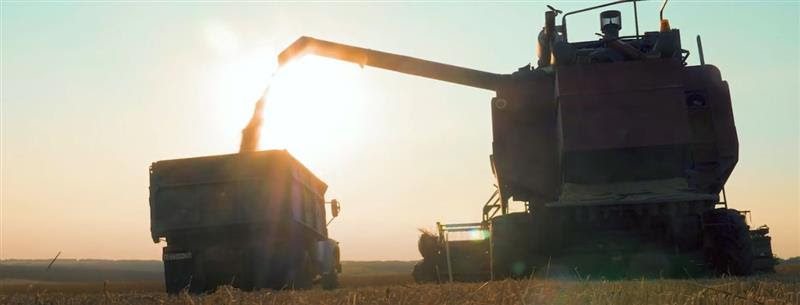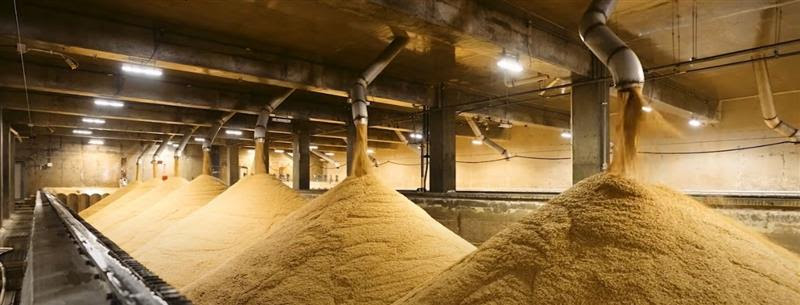CHOO CHOO, BREW BREW – The Signal – 3/27/25

Harvest. Brew. Deliver.
From shamrock-filled bars on St. Patrick’s Day to March Madness watch parties and baseball’s Opening Day, this is a big month for beer in America.
Behind every pint is a powerful supply chain: the agriculture sector, the beer industry, and America’s freight railroads working together to deliver the ingredients, packaging, and finished products that fuel the festivities. These industries are critical to our nation’s success—supporting millions of jobs, boosting rural and urban economies, and generating massive economic activity.

A bottle of beer’s journey begins in the agriculture sector, with high-quality barley grown in states like Idaho and Montana. After harvest, the barley is trucked to grain elevators and loaded into covered hopper railcars.

Freight rail transports the barley to facilities where skilled workers use advanced equipment to process it into malt—marking the transition from agriculture to the beer industry.

The malt travels by rail to breweries, where it’s brewed and bottled into beer. The finished product is then loaded back onto freight trains and delivered to warehouses across the country, with trucks completing the final leg to distributors.
Fun Fact: In a yard outside Chicago, winter temps can drop low enough to freeze beer. To keep it flowing, train crews perform a delicate logistical dance—using remote control or manual switches to keep beer cars moving, especially ahead of high-demand moments like Cinco de Mayo, when as many as 80 beer cars can pack the yard.
👆 Watch the journey unfold in this quick explainer from Union Pacific.

BNSF to serve new grain-loading terminal in Wisconsin.
Speaking of grain, ALCIVIA, a member-owned agriculture and energy co-op, recently opened a new grain shuttle loading facility in Hager City, Wisconsin, on BNSF’s network.
Spanning 40 acres, the site includes eight grain bins with a combined 3.9 million bushels of storage, high-capacity dryers, and dump pits—enabling handling speeds of up to 60,000 bushels per hour. The facility offers year-round rail shipping, allowing for grain movement even in winter months when other terminal are closed.
Fun Fact: One rail car can carry enough barley for 94,000 gallons of beer.

EXPERT INPUT
America’s roads are deteriorating, with rising maintenance costs and $2 trillion annually in societal costs from traffic accidents. Despite these challenges, some lawmakers are pushing to allow larger trucks on highways through bills like the CARS Act. Critics, including the Taxpayers Protection Alliance (TPA), argue these oversized trucks would worsen road damage, increase safety risks, and impose even greater costs on taxpayers.
“Instead of pushing for more oversized trucks, federal lawmakers should maintain and preserve current truck weight limits and allow states the flexibility and freedom to craft transportation systems around a default rule,” says Ross Marchand, TPA Policy Director. “Taxpayers and drivers deserve sensible roadworthiness rules that pump the breaks on increasing costs and safety concerns. This approach would ensure a more efficient, cost-effective, and safer transportation system — one that puts taxpayers and safety first.
TECHNOLOGY SPOTLIGHT
Cool Innovation…Literally
Freight railroads are constantly advancing new technologies to deliver better service and a safer railway for employees, customers, and communities. One example is CPKC’s cold wheel technology, a system that measures wheel temperatures while trains are in motion. This innovation helps detect potential issues with air brake systems and flags cars that need repair.
The result? Improved safety, increased efficiency, and a stronger, more reliable rail network.
If you’re reading this, chances are you’re a fan of railroads—just like us. If you haven’t already, we invite you to become a Rail Champion! It’s easy—simply sign up and show your support by adding the image to the left to your email signature, linking it to www.railchampions.org.
INDUSTRY READS
TRAINS
BNSF touts $4.2 billion of customer investments along its lines in 2024
FREIGHT WAVES
Norfolk Southern working on projects representing $9 billion in investments, executive say
MATERIAL LOGISTICS & HANDLING
Railroad Sector Records Low Injury Rates
TRANSPORTATION TODAY
Nation’s first battery-electric train deployed
WASHINGTON LEGAL FOUNDATION
Deregulation and Preemption of State Laws in the Railroad Industry: When Less May Be Better Than None (Analysis)





